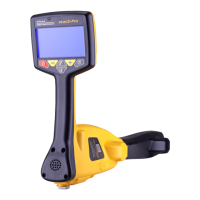™
Page 2
When using the signal clamp, both ends of the target cable should be grounded. Apply
the clamp below the ground point. Applying the clamp above the ground point will
prevent the signal from nding the return path through the ground, so it is not advised.
Note: Applying the SiS or SD signals requires the use of the SiS
Signal clamp.
Using the Direct Connection Method
If it is not possible to use a signal clamp, but you can conrm that the cable is out
of service and de-energized, use the direct connection method to apply the signal.
Removing any cross bonding between cables prevents the signal from traveling along
commonly bonded cables.
A low frequency is preferred in this application because they are less likely to leak or
bleed over to other cables.
Using the Induction Method
The Induction method is least preferred because the signal will be applied on all cables
near the transmitter.
2.2 Identifying a cable with the remote antenna
1. Connect the remote stethoscope antenna to the accessory input of the receiver.
The correct settings and user interface will be automatically selected.
2. Match the frequency of the vLoc3 receiver to that of the transmitter.
3. Place the stethoscope on each of the suspected target cables. Place with the
ats of the antenna in line with the route of the cable.
NOTE

